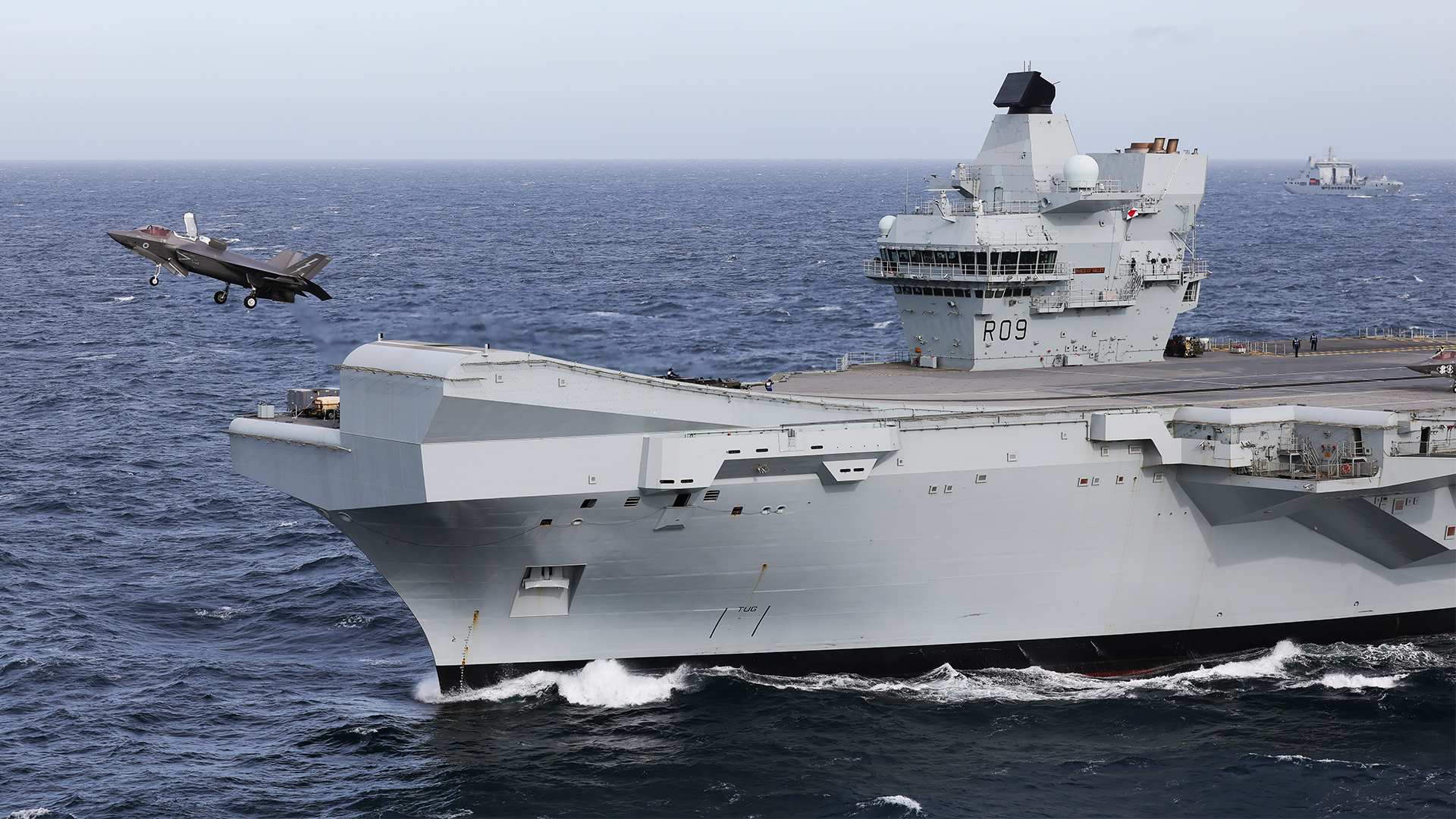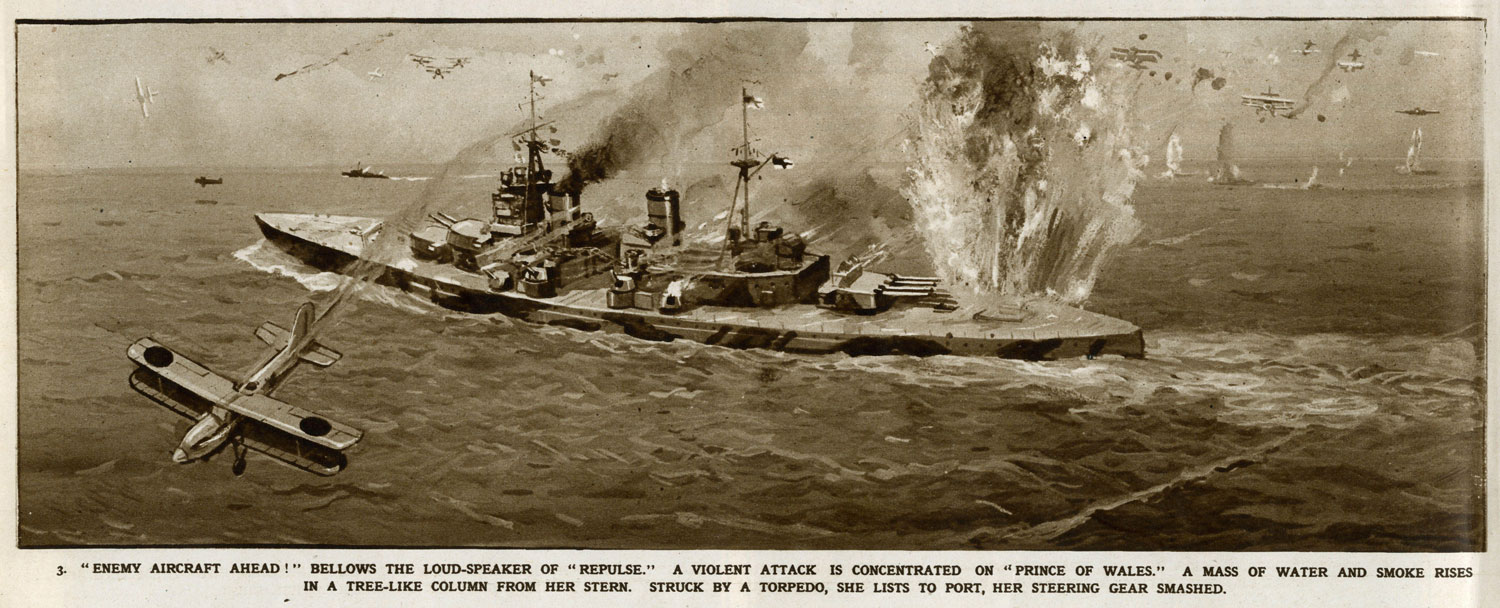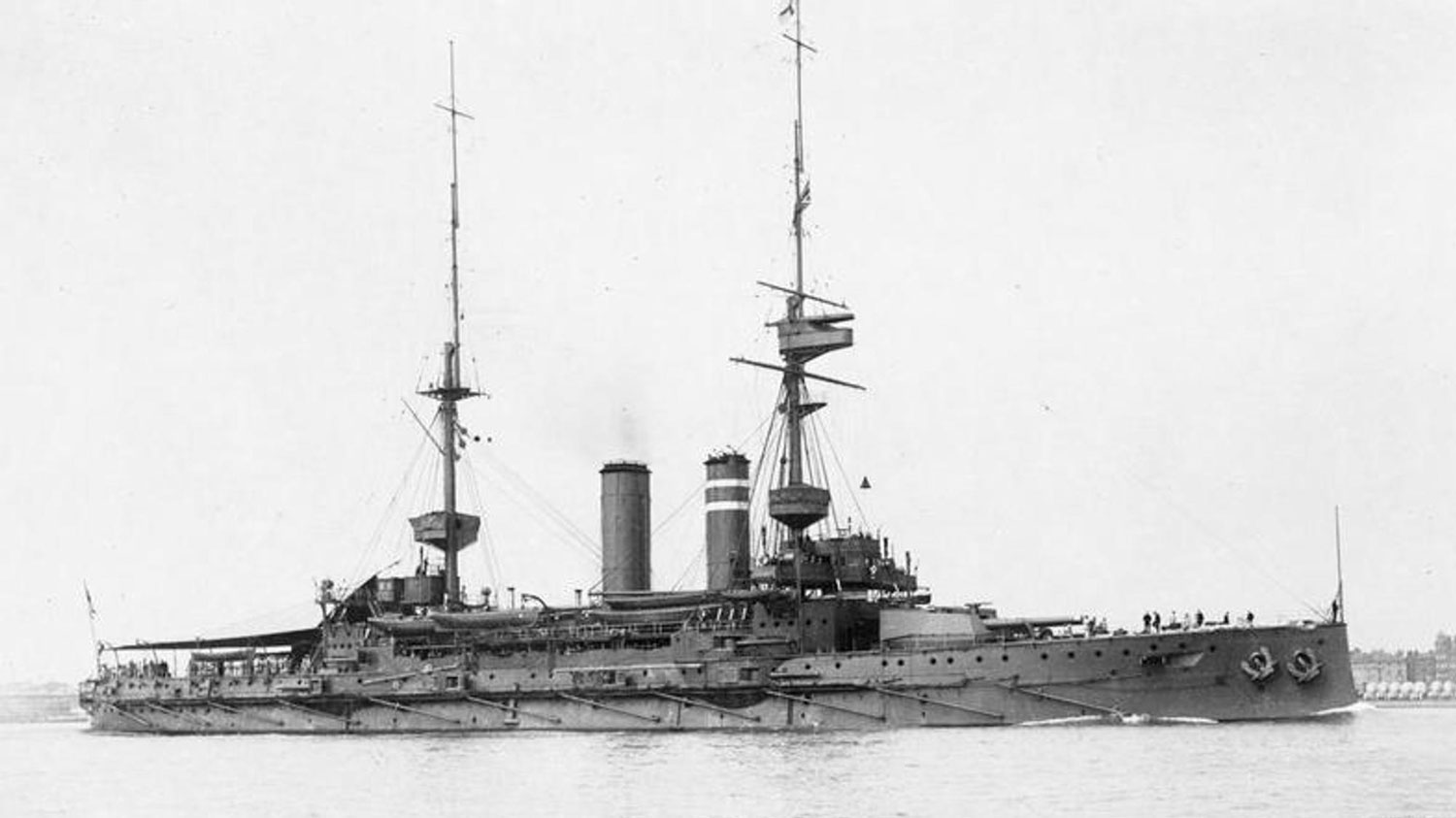
CSG25 might see HMS Prince of Wales sailing through significant historic waters

While HMS Prince of Wales leads Carrier Strike Group 25, she is expected to navigate the same waters where the King George V-class battleship of the same name sank on 10 December 1941, after being attacked by Japanese aircraft.
With the loss of 842 men the sinkings of HMS Prince of Wales (53) and Renown-class battlecruiser HMS Repulse (34) 61 nautical miles east of Kuantan in the South China sea was one of the worst disasters in British naval history.
On BFBS Sitrep, Professor Michael Clarke said: "This new Prince of Wales will be going back, I imagine, through the same waters. I wouldn't be surprised if there isn't some sort of little memorial ceremony involved."
The sinking of the previous incarnation of HMS Prince of Wales was a huge blow to Britain's morale but now there is a new Prince of Wales in the Pacific working with Britain's allies.

Prof Clarke said: "It shows that there is a sort of an enduring power to what the Royal Navy can do.
"We might be a much smaller Navy now than it was in 1941, immeasurably smaller, but there's an enduring presence and an enduring willingness to get out and about in the world and represent not just Britain's interests but the interests of world order."
Due to set to sail from Portsmouth on 22 April, Carrier Strike Group 25 will conduct exercises and port visits with partners including the US, India, Malaysia and Singapore before joining 19 partner nations for Exercise Talisman Sabre near Australia.
Which vessels have had the name?
HMS Prince of Wales is one of the most powerful surface warships ever constructed for the UK military, but the Queen Elizabeth-class aircraft carrier is far from the first Royal Navy vessel to hold the name.
Those to have carried the moniker throughout British naval history contain a selection of battleships designed to fight in very different eras of sea warfare.
Among the first vessels to be called Prince of Wales was a privateer ship that swapped hands between the French and the British over its lifetime and was at different points involved in various roles.
Another early Prince of Wales has sometimes been referred to as a "budget" battleship, as it boasted the firepower of a late 18th-century battleship, but was not as well-built as her contemporaries, like HMS Victory.
Despite being a generally unpopular type of ship, the Boyne-class vessel went on to fight throughout the Napoleonic Wars but did miss the Battle of Trafalgar.
According to the Royal Navy, the fifth Prince of Wales never saw active service, as it was surpassed by the technology of the era.
Eventually, she was converted into a training vessel for officer cadets in Dartmouth as HMS Britannia, in what would become the precursor to Britannia Royal Naval College.

The sixth Prince of Wales was a pre-dreadnought battleship serving diligently through the first half of the First World War.
She transported Royal Marines to Belgium in the first weeks of the conflict before moving on to spend the next two years in the Mediterranean.
She would finish her days of service as an overflow accommodation ship in Portsmouth.
The seventh Prince of Wales was built in response to the growing global unrest in the 1930s and was still being tested in 1941 when she was dispatched to intercept Hitler's flagship, the German battleship Bismarck.
Despite dealing with several mechanical problems with her turrets, the battleship hit the Bismark multiple times, forcing her to cut short her sortie.
Once repaired at port, she took Prime Minister Winston Churchill to Newfoundland for a meeting with US President Franklin D Roosevelt, before moving on to the Mediterranean to support the Malta convoys.
It would be her final act of the war, safeguarding Singapore, that would see her sunk, attacked by Japanese bombers.
Both she and the battle-cruiser HMS Repulse would sink beneath the waves, sharing a loss of 842 men – 513 from Repulse and 327 from Prince of Wales.
The present-day HMS Prince of Wales is the second of the UK's Queen Elizabeth-class aircraft carriers.
She was commissioned in December 2019 during a ceremony attended by the Duke and Duchess of Cornwall.
The 65,000-tonne vessel recently passed basic sea training, after having taken part in training with three British Army Apaches developing their take-off and landing capabilities – the first time an Apache and an F-35 have operated from the same flight deck.
An F-35 fighter also landed on the deck of HMS Prince of Wales for the first time during the training.
You can listen to Sitrep wherever you get your podcasts, including on the BFBS Forces News YouTube channel.
For more reports about Carrier Strike Group 25 click here.









